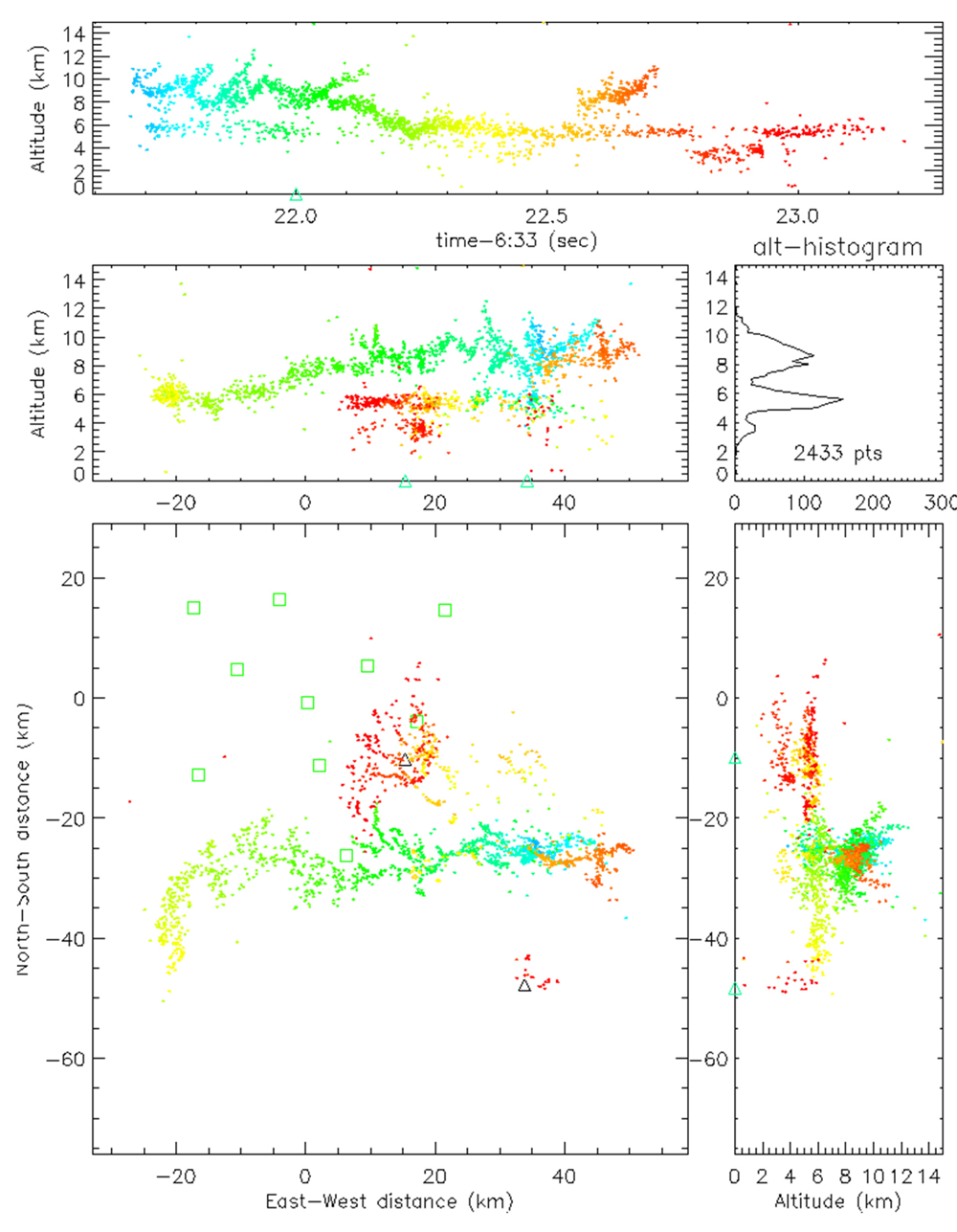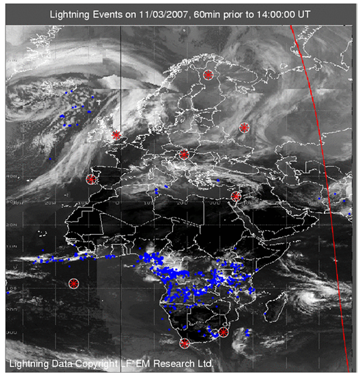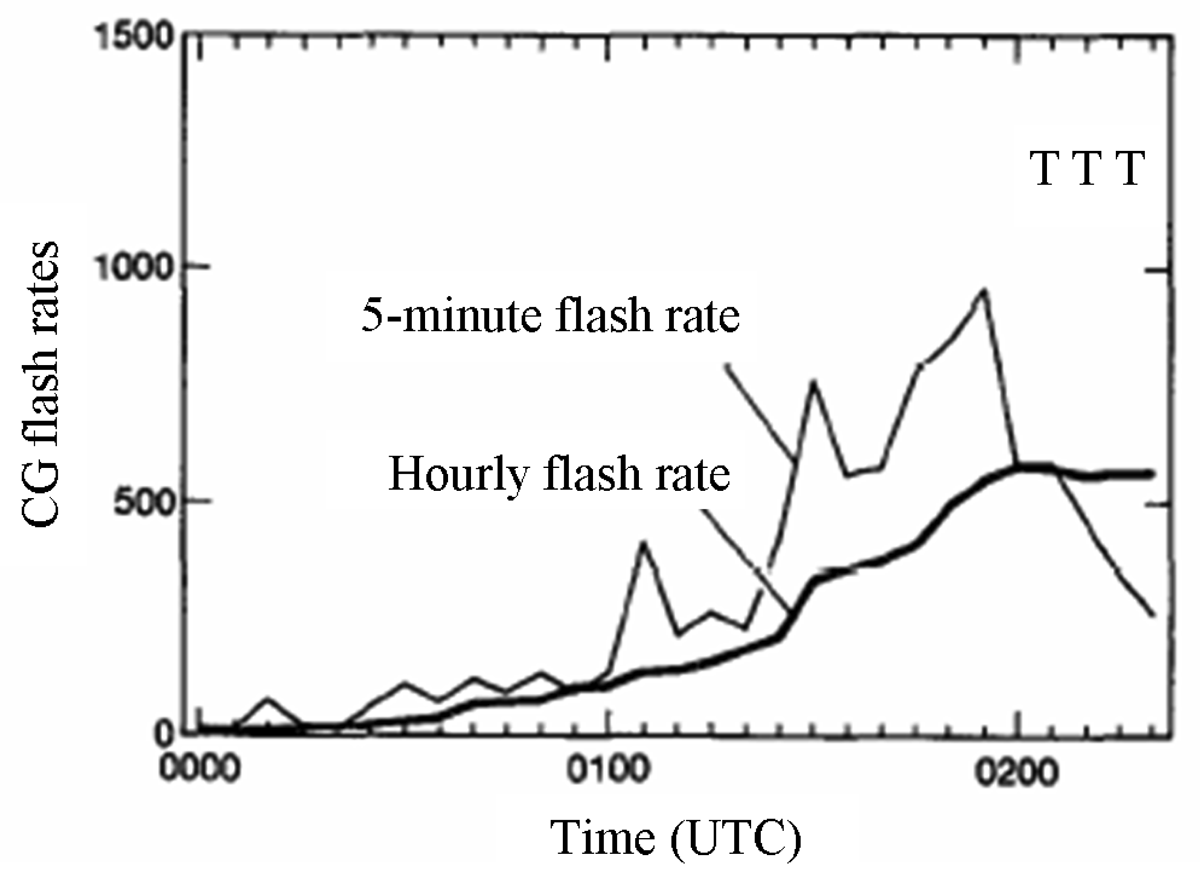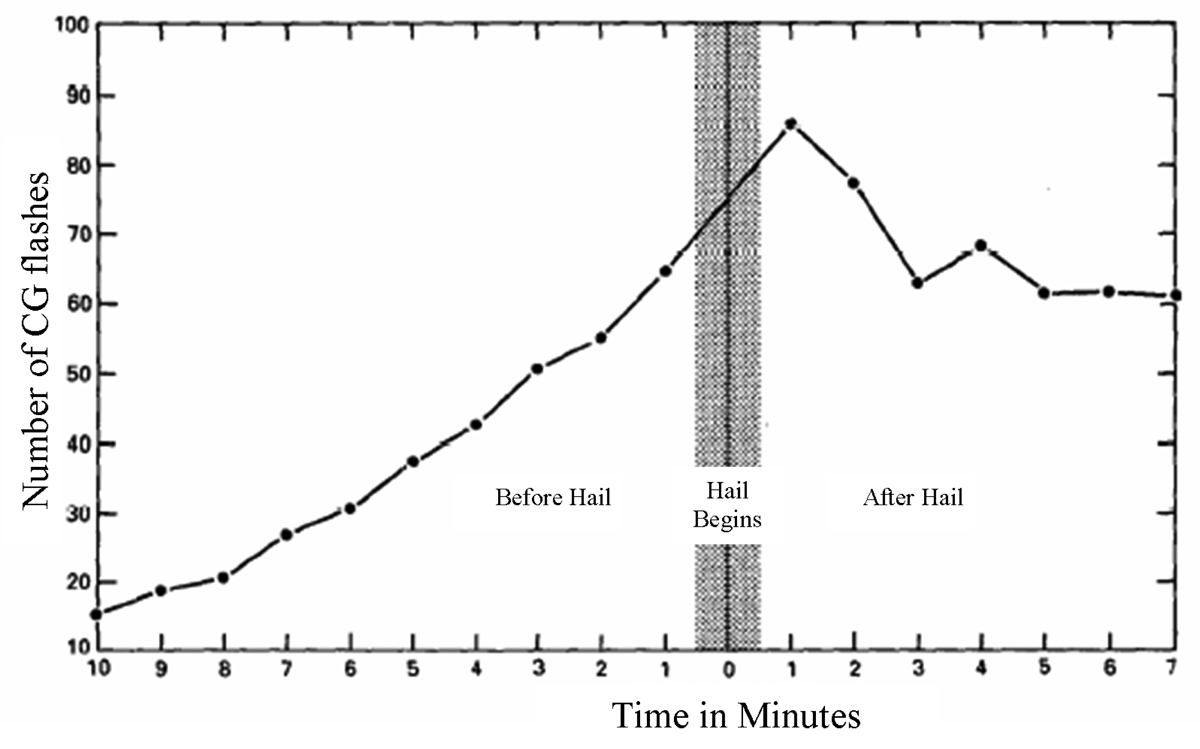Lightning Sensors for Observing, Tracking and Nowcasting Severe Weather
Abstract
:1. Introduction
2. Lightning Sensors
2.1. Very High Frequency (VHF) sensors
2.2 Very Low Frequency (VLF) sensors
2.3 Extremely Low Frequency (ELF) sensors
3. Applications for hazardous weather conditions
4. Summary and Conclusions
Acknowledgments
References and Notes
- Intergovernmental Panel on Climate Change (IPCC). Climate Change 2007: The Physical Science Basis. World Meteorological Organization (WMO) and UN Environment Programme (UNEP) 2007. [Google Scholar]
- Rison, W.; Thomas, R.J.; Krehbiel, P.R.; Hamlin, T.; Harlin, J. A GPS-based three dimensional lightning mapping system: Initial observations in central New Mexico. Geophys. Res. Lett. 1999, 26, 3573–3576. [Google Scholar]
- Wood, T.G.; Inan, U.S. Long-range tracking of thunderstorms using sferic measurements. J. Geophys. Res. 2002, 107, D21. 4553. [Google Scholar] [CrossRef]
- Greenberg, E.; Price, C. A global lightning location algorithm based on the electromagnetic signature in the Schumann resonance band. J. Geophys. Res. 2004, 109. D21111. [Google Scholar] [CrossRef]
- Krider, E.P.; Noggle, R.C.; Uman, M.A. A gated wideband magnetic direction-finder for lightning return strokes. J. Appl. Meteor. 1976, 15, 301–306. [Google Scholar]
- Lee, A.C.L. Ground truth confirmation and theoretical limits of an experimental VLF arrival time difference lightning flash locating system. Quart. J. Roy. Meteor. Soc. 1989, 115, 1147–1166. [Google Scholar]
- Cummings, K.L.; Murph, M.J.; Bardo, E.A.; Hiscox, W. L.; Pyle, R.B.; Pifer, A.E. A combined TOA/MDF technology upgrade of the US National Lightning Detection Network. J. Geophys. Res. 1998, 103(D8), 9035–9044. [Google Scholar]
- Hayenga, C.O.; Warwick, J.W. Two-dimensional interferometric positions of VHF lightning sources. J. Geophys. Res. 1981, 86, 7451–7462. [Google Scholar]
- Kawasaki, Z.I.; Yamamoto, K.; Matsuura, K.; Richard, P.; Matsui, T.; Sonoi, Y.; Shimokura, N. SAFIR operation and evaluation of it's performance. Geophys. Res. Lett. 1994, 21(12), 1133–1136. [Google Scholar]
- Goodman, S.; Blakeslee, R.; Christian, H.; Koshak, W.; Bailey, J.; Hall, J.; McCaul, E.; Buechler, D.; Darden, C.; Burks, J.; Bradshaw, T.; Gatlin, P. The North Alabama Lightning Mapping Array: Recent severe storm observations and future prospects. Atmos. Res. 2005, 76(1-4), 423–437. [Google Scholar]
- Richard, P.; Auffray, G. VHF-UHF interferometric measurements, applications to lightning discharge mapping. Radio Sci. 1985, 20, 171–192. [Google Scholar]
- Shao, X.M.; Krehbiel, P.R.; Thomas, R.J.; Rison, W. Radio interferometric observations of cloud-to-ground lightning phenomena in Florida. J. Geophys. Res. 1995, 100, 2749–2783. [Google Scholar]
- Proctor, D.E. A hyperbolic system for obtaining VHF radio pictures of lightning. J. Geophys. Res. 1971, 76, 1478–1489. [Google Scholar]
- Krehbiel, P.R.; Thomas, R.J.; Rison, W.; Hamlin, T.; Harlin, J.; Davis, M. GPS-based mapping system reveals lightning inside storms. Eos, Transactions American Geophysical Union 2000, 81(3), 21–21. [Google Scholar]
- Pierce, E.T. Atmospherics and radio noise. Lightning, Vol. 1: Physics of Lightning 1977, 351–384. [Google Scholar]
- Krider, E.P.; Noggle, R.C.; Pifer, A.E.; Vance, D.L. Lightning direction finding systems for forest fire detection. Bull. Amer. Meteot. Soc. 1980, 61, 980–986. [Google Scholar]
- Defer, E.; Lagouvardos, K.; Kotroni, V. Lightning activity in the eastern Mediterranean region. J. Geophys. Res. 2005, 110(D24). [Google Scholar] [CrossRef]
- Lay, E.H.; Jacobson, A.R.; Holzworth, R.H.; Rodger, C.J.; Dowden, R.L. Local time variation in land/ocean lightning flash density as measured by the World Wide Lightning Location Network. J. Geophys. Res. 2007, 112(D13). [Google Scholar] [CrossRef]
- Rodger, C.J.; Werner, S.; Brundell, J.B.; Lay, E.H.; Thomson, N.R.; Holzworth, R.H.; Dowden, R.L. Detection efficiency of the VLF World-Wide Lightning Location Network (WWLLN): initial case study. Annales Geophysicae 2006, 24(12), 3197–3214. [Google Scholar]
- Lay, E.H.; Holzworth, R.H.; Rodger, C.J.; Thomas, J.N.; Pinto, O., Jr.; Dowden, D.L. WWLL global lightning detection system: Regional validation study in Brazil. Geophys. Res. Lett. 2004, 31. L03102. [Google Scholar] [CrossRef]
- Price, C.; Pechony, O.; Greenberg, E. Schumann resonances in lightning research. J. of Lightning Res. 2007, 1, 1–15. [Google Scholar]
- Ogawa, T.; Tanka, Y.; Miura, T.; Yasuhara, M. Observations of natural ELF electromagnetic noises by using the ball antennas. J. Geomagn. Geoelectr. 1966, 18, 443–454. [Google Scholar]
- Huang, E.; Williams, E.; Boldi, R.; Heckman, S.; Lyons, W.; Taylor, M.; Nelson, T.; Wong, C. Criteria for sprites and elves based on Schumann resonance observations. J. Geophys. Res. 1999, 104(D14), 16943–16952. [Google Scholar]
- Kemp, D.T.; Ll. Jones, D. A new technique for the analysis of transient ELF electromagnetic disturbances within the Earth–ionosphere cavity. J. Atmos. Terr. Phys. 1971, 33, 567–572. [Google Scholar]
- Burke, C.P.; Ll. Jones, D. Global radiolocation in the lower ELF frequency band. J. Geophys. Res. 1995, 100(D12), 26263–26272. [Google Scholar]
- Greenberg, E.; Price, C. A global lightning location algorithm based on the electromagnetic signature in the Schumann resonance band. J. Geophys. Res. 2004, 109(D21). [Google Scholar] [CrossRef]
- Price, C.; Greenberg, E.; Yair, Y.; Sátori, G.; Bór, J.; Fukunishi, H.; Sato, M.; Israelevich, P.; Moalem, M.; Devir, A.; Levin, Z.; Joseph, J.H.; Mayo, I.; Ziv, B.; Sternlieb, A. Ground-based detection of TLE-producing intense lightning during the MEIDEX mission on board the Space Shuttle Columbia. Geophys. Res. Lett. 2004, 31. L20107 doi:1029/2004GL020711. [Google Scholar]
- Rafalsky, V.A.; Shvets, A.V.; Hayakawa, M. One-site distance-finding technique for locating lightning discharges. J. Atmos. Solar-Terr. Phys. 1995, 57(11), 1255–1261. [Google Scholar]
- Price, C.; Asfur, M.; Lyons, W.; Nelson, T. An improved ELF/VLF method for globally geolocating sprite-produced lightning. Geophys. Res. Lett. 2002, 29(3). [Google Scholar] [CrossRef]
- Williams, E.R. The electrification of severe storms. Severe Convective Storms 2001, 27(49), 570. [Google Scholar]
- Price, C.; Murphy, B. Lightning activity during the 1999 Superior Derecho. Geophys. Res. Lett. 2002, 29(23), 57.1–57.4. [Google Scholar]
- Carey, L.D.; Petersen, W.A.; Rutledge, S.A. Evolution of Cloud-to-Ground Lightning and Storm Structure in the Spencer, South Dakota, Tornadic Supercell of 30 May 1998. Mon. Wea. Rev. 2003, 131(8), 1811–1131. [Google Scholar]
- Seimon, A. Anomalous cloud-to-ground lightning in an F5-tornado-producing supercell thunderstorm on 28 August 1990. Bull. Amer. Met. Soc. 1993, 74(2), 189–203. [Google Scholar]
- Kane, R.J. Correlating lightning to severe local storms in the northeastern United States. Weather and Forecasting 1991, 6(1), 3–12. [Google Scholar]
- Perez, A. H.; Wicker, L.J.; Orville, R.E. Characteristics of cloud-to-ground lightning associated with violent tornadoes. Mon. Wea. Rev. 1997, 12(3), 428–437. [Google Scholar]
- Changnon, S.A. Temporal and Spatial Relations between Hail and Lightning. J. Appl. Meteor. 1992, 31(6), 587–604. [Google Scholar]
- Carey, L.A.; Rutledge, S.A. Electrical and multiparameter radar observations of a severe hailstorm. J. Geophys. Res. 1998, 103(D12), 13979–14000. [Google Scholar]
- Kyle, C.W.; Rutledge, S.A.; Tessendorf, S.A. The 29 June 2000 supercell observed during STEPS. Part II: Lightning and charge structure. J. Atmos. Res. 2005, 62(12), 4151–4177. [Google Scholar]
- Soula, S.; Seity, Y.; Feral, L.; Sauvageot, H. Cloud-to-ground lightning activity in hail-bearing storms. J. Geophys. Res. 2004, 109. D02101. [Google Scholar] [CrossRef]
- Soula, S.; Sauvageot, H.; Molinié, G.; Mesnard, F.; Chauzy, S. The CG lightning activity of a storm causing a flash-flood. Geophys. Res. Lett. 1998, 25(8), 1181–1184. [Google Scholar]
- Piepgrass, M.V.; Krider, E.P.; Moore, C.B. Lightning and surface rainfall during Florida thunderstorms. J. Geophys. Res. 1982, 87(C13), 11193–2001. [Google Scholar]
- Tapia, A.; Smith, J.; Dixon, M. Estimation of convective rainfall from lightning observations. J. Appl. Meteorol. 1998, 37(11), 1497–1509. [Google Scholar]
- Petersen, W.A.; Rutledge, S.A. On the relationship between cloud-to-ground lightning and convective rainfall. J. Geophys. Res. 1998, 103(12), 14025–14040. [Google Scholar]
- Zhou, Y.; Qie, X.; Soula, S. A study of the relationship between cloud-to-ground lightning and precipitation in the convective weather system in China. Annales Geophysicae 2002, 20(1), 107–113. [Google Scholar]
- Price, C.; Federmesser, B. Lightning-rainfall relationships in Mediterranean winter thunderstorms. Geophys. Res. Lett. 2006, 33. L07813. [Google Scholar] [CrossRef]
- Price, C.; Yair, Y.; Asfur, M. East African lightning as a precursor of Atlantic hurricane activity. Geophys. Res. Lett. 2007, 34. L09805 doi:1029/2006GL028884. [Google Scholar]
- Chronis, T.; Williams, E.; Anagnostou, M.; Petersen, W. African lightning: indicator of tropical Atlantic cyclone formation. EOS, Transactions, American Geophysical Union 2007, 88(40), 397–408. [Google Scholar]
- Williams, E.R. The Schumann Resonance: a global tropical thermometer. Science 1992, 256, 1184–1186. [Google Scholar]
- Price, C. Global surface temperatures and the atmospheric electric circuit. Geophys. Res. Lett. 1993, 20, 1363–1366. [Google Scholar]
- Williams, E.R. Lightning and climate: A review. Atmos. Res. 2005, 76, 272–287. [Google Scholar]
- Price, C.; Asfur, M. Can lightning observations be used as an indicator of upper-tropospheric water vapor variability? Bull. Amer. Meteor. Soc. 2006, 87, 291–298. [Google Scholar]
- Price, C.; Penner, J.; Prather, M. NOx from Lightning, Part I: Global Distribution Based on Lightning Physics. J. Geophys. Res. 1997, 102, 5929–5941. [Google Scholar]
- Schumann, U.; Huntrieser, H. The global lightning-induced nitrogen oxides source. Atmos. Chem. Phys. Discuss. 2007, 7, 2623–2818. [Google Scholar]
- Sato, M.; Fukunishi, H. New evidence for a link between lightning activity and tropical upper cloud coverage. Geophys. Res. Lett. 2005, 32. L12807. [Google Scholar] [CrossRef]





| Sensors | Frequency (Hz) | Location Techniques | Spatial Coverage | Location Accuracy | Type of Lightning Detected | Detection Efficiency (% of total) |
|---|---|---|---|---|---|---|
| VHF | ∼ 108 | TOA, IF | Local | meters | Total: IC, CG | >90% |
| VLF | ∼104 | DF, TOA | Regional | kilometers | Mainly CG | <25% |
| ELF | ∼10 | DF | Global | Megameters | CG | <5% |
© 2008 by MDPI Reproduction is permitted for noncommercial purposes.
Share and Cite
Price, C. Lightning Sensors for Observing, Tracking and Nowcasting Severe Weather. Sensors 2008, 8, 157-170. https://doi.org/10.3390/s8010157
Price C. Lightning Sensors for Observing, Tracking and Nowcasting Severe Weather. Sensors. 2008; 8(1):157-170. https://doi.org/10.3390/s8010157
Chicago/Turabian StylePrice, Colin. 2008. "Lightning Sensors for Observing, Tracking and Nowcasting Severe Weather" Sensors 8, no. 1: 157-170. https://doi.org/10.3390/s8010157




